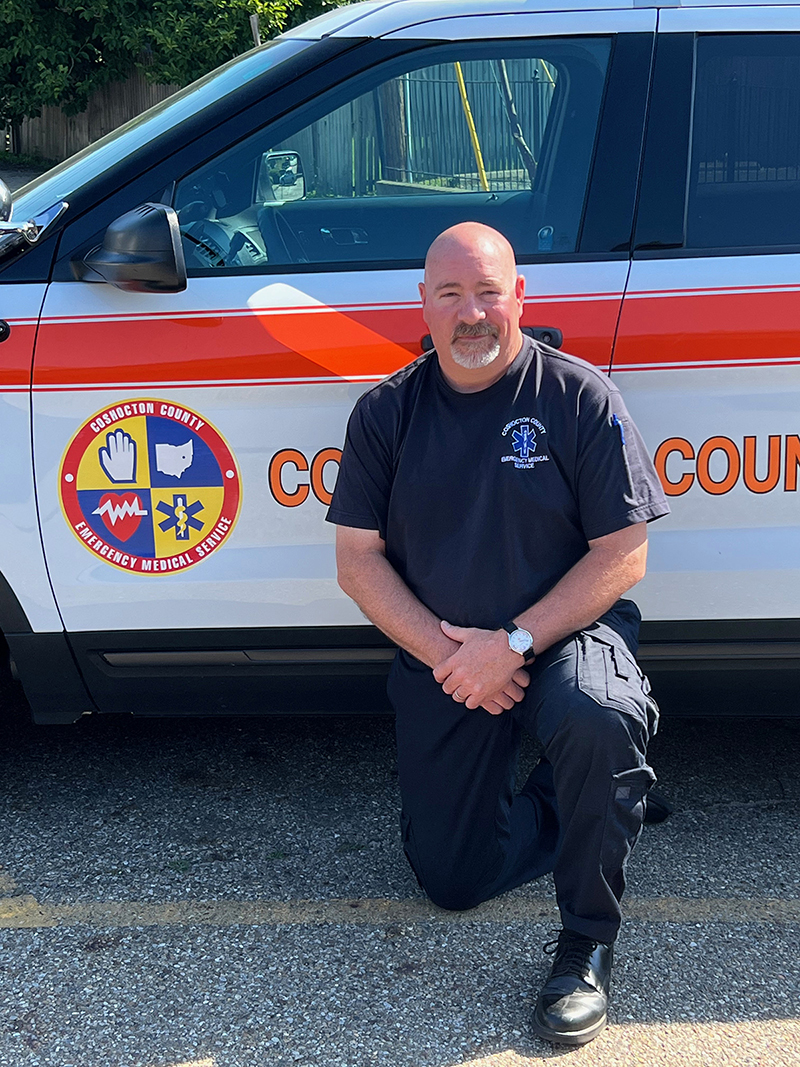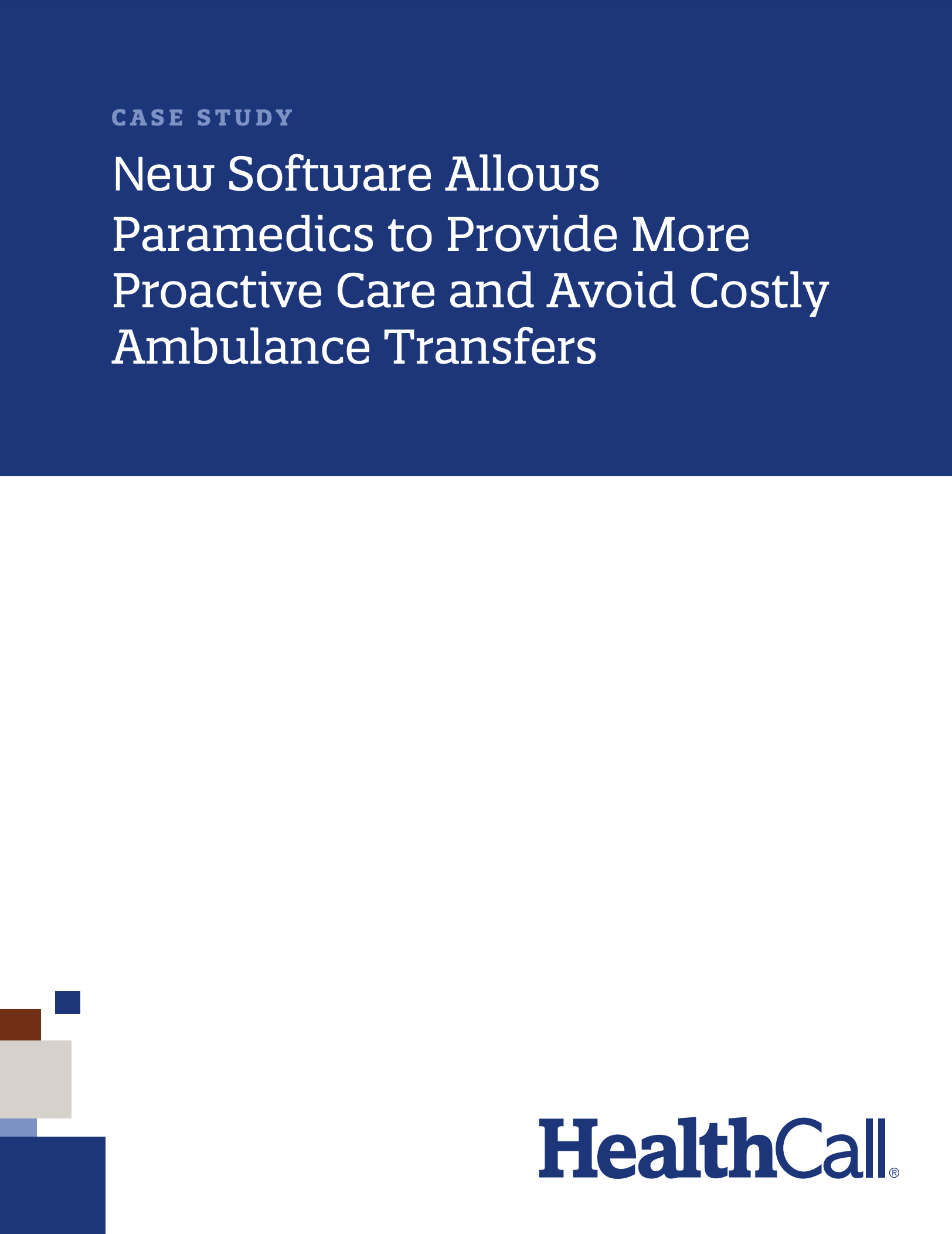New software allows paramedics to provide more proactive care and avoid costly ambulance transfers.
Community Paramedicine
House Calls Are Back With 21st Century Technology

In Coshocton County, Ohio, paramedics are taking house calls to a whole new level.
“The sky’s the limit,” said Christopher Menapace, BBA, OFE, OFC, EMT-P, EMS-I, CPRS, a paramedic and former fire chief who leads a new community paramedic program as the Mobile Integrated Health Captain. The program was launched by Coshocton County Emergency Medical Services to reduce repeat 9-1-1 calls and avoid unnecessary trips to the hospital emergency room, contribute to the overall quality of life for people by keeping them at the center of an individualized treatment plan, and help people stay at home as they manage their chronic health conditions.
Although Menapace said they only have preliminary metrics at this point, the team is already noticing a drop in call volume. One woman in the county had called 9-1-1 a total of 67 times between January and October 2021. Since April, around the time Menapace and his team began using HealthCall, the patient hasn’t used 9-1-1 because she is being monitored, Menapace said.
I’ve been doing electronic reporting since 2004,” Menapace said, “and have never encountered anything this customizable. I’m talking to a patient’s primary care physician from the patient’s living room or front porch. Patients don’t have to leave their home, the doctor is on a video call with me, a treatment plan is put in place, and no one goes to the hospital.”
House calls where everything can be handled from the patient’s home—including getting primary care doctors on video during a home visit to prescribe treatment and skip an expensive ambulance ride—becomes mission critical in a wide rural county that’s 567 square miles and home to 36,000 people. Coshocton County is 122 miles south of Cleveland, and where an estimated 15 percent live in poverty, according to the U.S. Census statistics.
Many Coshocton residents lack a primary care provider and rely on 9-1-1 for basic medical services. Coshocton County Emergency Medical Services introduced the Mobile Integrated Healthcare (MIH) program endeavor in October 2021 to minimize repetitive 9-1-1 calls and to better use county agency resources. Menapace and his team began using HealthCall’s Care Delivery platform in April to more effectively and efficiently document and track patient care.
Menapace explained, “People talk about fire prevention, like making sure the sprinklers work. I call what we’re doing EMS prevention, and it’s already helping our patients have a higher quality of life at home without hospital visits.”
Changing Best Practices
Menapace and his team use HealthCall’s SMART Charts, a multidisciplinary tool where community paramedicine practitioners can log and track a range of data in one place, allowing for tremendous versatility of use as well as having a patient’s entire visit and medication history in one place. SMART Charts data can include: vitals, disease-specific assessments, STEADI fall risk, Audit-C’s, standardized screenings, including suicide prevention, as well as administrative assessments for time tracking and referrals. A single click can also trigger a schedule for a follow-up visit or a phone or video conference with another practitioner. All of these steps can mitigate the need for an ambulance transfer to the hospital.
Continuity in reporting allows more streamlined follow-up care, which can also help reduce possible future 9-1-1 calls and ambulance transfers. Menapace described a recent case in which a wheelchair-bound elderly Medicaid patient who had a history of calling 9-1-1 had fallen. Menapace went to her home and determined she needed to be in a nursing care facility. Normally, this individual would first be required to be taken to the hospital for diagnosis and documentation.
However, through the HealthCall platform, Menapace shared a report with the patient’s primary care physician who was impressed with the level of detail and signed off on redirecting the patient to nearby nursing home where she was admitted. The County avoided the cost of the transport while the patient received better care more quickly — they received the appropriate treatment plan while avoiding the typically required three-day hospital admission. This is a savings realized by the patient, EMS, the hospital, and the insurance company. All of this was possible because of the documentation generated from the HealthCall platform.
“That type of response was impossible with our old system and different platforms that we tried,” said Menapace. “What’s changed is that our documentation software was incident-specific, you couldn’t track patients over time. The new software is designed to be patient-specific, showing the entire picture of how the patient was stabilized, what’s needed for follow-up, and where they were sent. We’re going back to old-fashioned house calls but with better tools.”

Download Case Study
Fill out the form below to download the Coshocton Case Study
